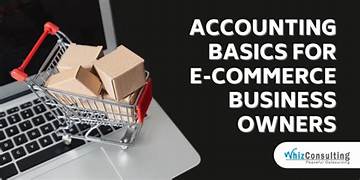Accounting for e-commerce business
Accounting is a painful necessity for business owners. It is the dull side of the business. However, if you want your business to grow, you cannot avoid it. Packing all your receipts and handing them to a stranger is not good enough. In addition, you do not need an accountant to do the day-to-day entries, but you need to know the basics if you need help.
First, let me talk about having accounting software and using, for example, Quicks Book, a cloud accounting package. It is easy to use but you will get used to it if you practice well.
Check on your cash flow.
The crucial part of all this is to have a separate bank account for your business. You have to know your financial position and confirm that your business is making money, so the best way to find out is to monitor your cash flow.
Decide what you are going to sell, either a product or service.
If you are selling products, checking on inventory is crucial. If not, you might lose sales if the product is unavailable or the order is in excess, which blocks your cash and creates cash flow problems. Therefore, maintaining the inventory is crucial.
There are four accounts involved in the inventory.
Purchase
Sales
Returns inwards
Returns outwards
Let us assume a business buys a book for $100, and the shipping cost for that is $5.00 and recorded in the inventory account. Besides, when the company sells the book, the amount will be $105, which is removable from the inventory account.
Inventory categorization is generally as raw materials, work in progress, finished goods, and raw materials are unprocessed goods used to produce interest.
Costing & Pricing a product or service
Costs itself a separate subject, as there are many different methods of allocating costs to business activities. Charging is the expenses incurred in the production of a product or in providing a service. The price is the amount the customer is willing to pay. The cost incurred to produce a product directly impacts pricing and the company’s profit. There is a well-known tendency for small owners to under-price the item, as they believe in having more sales. However, they do not realize that it is risky to under-price as they might face a substantial loss.
It is essential to classify the costs appropriately for budgeting and accounting purposes. It is vital to properly understand direct and indirect costs, as you need to use that for correct pricing. When you know the exact charges, easy to price your product competitively and accurately, it also becomes easier to implement better practices and explain to the investors. Some of these costs are tax-deductible when filing your accounts.
Profit margin
Ensuring you set the profit margin correctly, your business will see a loss if the price is too low or high; your buyers will move from you. So need to check the competitor when you do the pricing of your product.
Tax payments
We need to calculate the tax and make the tax payments on time. You must register for VAT if the sales exceed threshold d and make quarterly payments.



